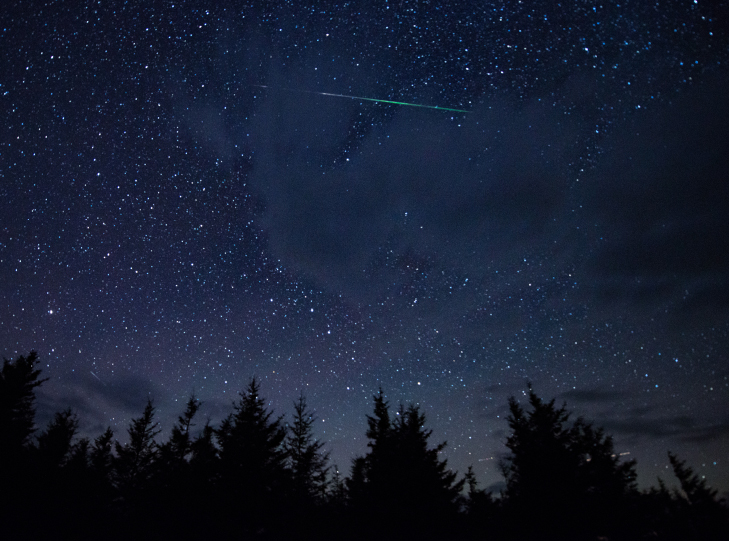| << Chapter < Page | Chapter >> Page > |
The California Academy of Sciences has a short animated guide on “How to Observe a Meteor Shower.”
No shower meteor has ever survived its flight through the atmosphere and been recovered for laboratory analysis. However, there are other ways to investigate the nature of these particles and thereby gain additional insight into the comets from which they are derived. Analysis of the flight paths of meteors shows that most of them are very light or porous, with densities typically less than 1.0 g/cm 3 . If you placed a fist-sized lump of meteor material on a table in Earth’s gravity, it might well fall apart under its own weight.
Such light particles break up very easily in the atmosphere, accounting for the failure of even relatively large shower meteors to reach the ground. Comet dust is apparently fluffy, rather inconsequential stuff. NASA’s Stardust mission used a special substance, called aerogel, to collect these particles. We can also infer this from the tiny comet particles recovered in Earth’s atmosphere with high-flying aircraft (see [link] ). This fluff, by its very nature, cannot reach Earth’s surface intact. However, more substantial fragments from asteroids do make it into our laboratories, as we will see in the next section.
Observing a meteor shower is one of the easiest and most enjoyable astronomy activities for beginners ( [link] ). The best thing about it is that you don’t need a telescope or binoculars—in fact, they would positively get in your way. What you do need is a site far from city lights, with an unobstructed view of as much sky as possible. While the short bright lines in the sky made by individual meteors could, in theory, be traced back to a radiant point (as shown in [link] ), the quick blips of light that represent the end of the meteor could happen anywhere above you.

The key to observing meteor showers is not to restrict your field of view, but to lie back and scan the sky alertly. Try to select a good shower (see the list in [link] ) and a night when the Moon will not be bright at the time you are observing. The Moon, street lights, vehicle headlights, bright flashlights, and cell phone and tablet screens will all get in the way of your seeing the faint meteor streaks.
You will see more meteors after midnight, when you are on the hemisphere of Earth that faces forward—in the direction of Earth’s revolution around the Sun. Before midnight, you are observing from the “back side” of Earth, and the only meteors you see will be those that traveled fast enough to catch up with Earth’s orbital motion.
When you’ve gotten away from all the lights, give your eyes about 15 minutes to get “dark adapted”—that is, for the pupils of your eyes to open up as much as possible. (This adaptation is the same thing that happens in a dark movie theater. When you first enter, you can’t see a thing, but eventually, as your pupils open wider, you can see pretty clearly by the faint light of the screen—and notice all that spilled popcorn on the floor.)
Seasoned meteor observers find a hill or open field and make sure to bring warm clothing, a blanket, and a thermos of hot coffee or chocolate with them. (It’s also nice to take along someone with whom you enjoy sitting in the dark.) Don’t expect to see fireworks or a laser show: meteor showers are subtle phenomena, best approached with a patience that reflects the fact that some of the dust you are watching burn up may first have been gathered into its parent comet more than 4.5 billion years ago, as the solar system was just forming.
When a fragment of interplanetary dust strikes Earth’s atmosphere, it burns up to create a meteor. Streams of dust particles traveling through space together produce meteor showers, in which we see meteors diverging from a spot in the sky called the radiant of the shower. Many meteor showers recur each year and are associated with particular comets that have left dust behind as they come close to the Sun and their ices evaporate (or have broken up into smaller pieces).

Notification Switch
Would you like to follow the 'Astronomy' conversation and receive update notifications?